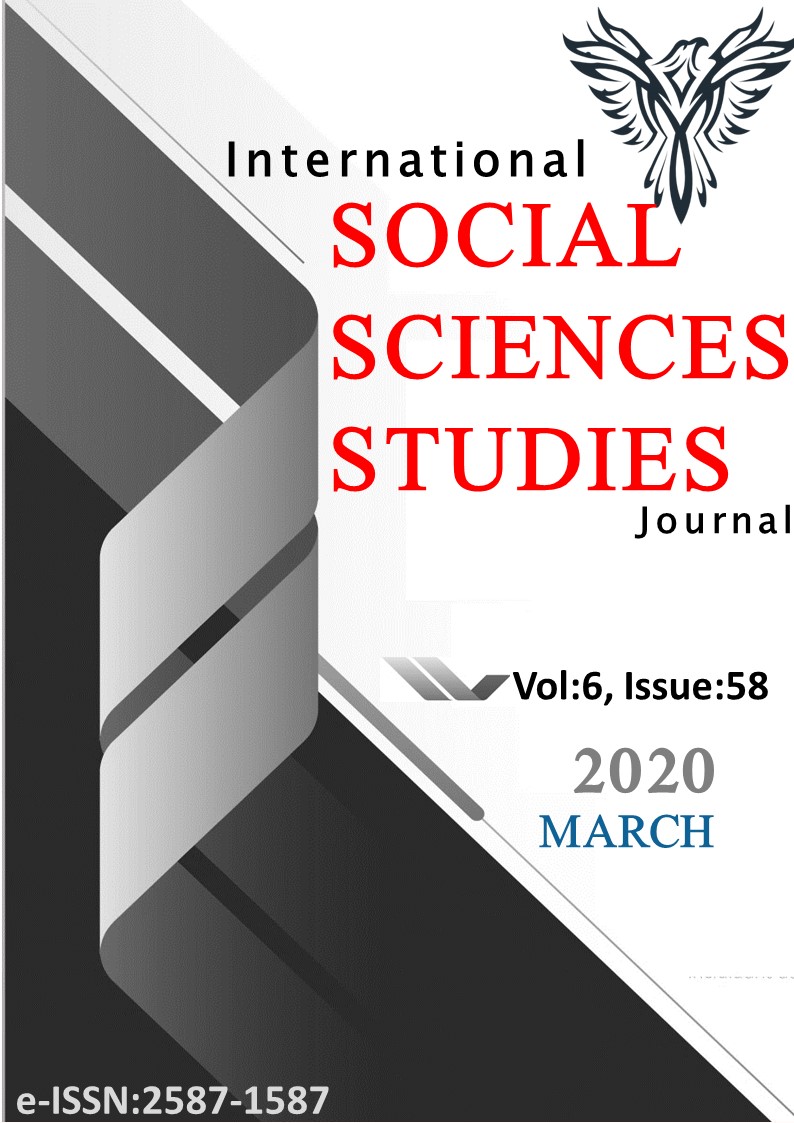Author :
Abstract
1869’da Henry Matisse, Fransa’nın kuzeyinde bulunan La Cateau kentinde dünyaya gelmiştir. Kendisi eğitimini hukuk alanında yapmış olmasına rağmen sanata ilgi duymuş ve sanat dünyasına birçok önemli eser bırakmıştır. Sanatçı, sembolist ressam olan Gustave Moreau’dan özel sanat dersleri almıştır. İlk sergisini 1904’te Vollard Galerisinde açan sanatçı 1905-1906 yıllarında Salon d’Automne’de sergilere katılmıştır. Matisse bu sergilerdeki diğer sanatçılarla beraber Fovlar diye tanınmaya başlamıştır. Birçok ülkeyi gezmiş ve oralarda dekorasyon ve duvar resimleri yapmıştır. 1927’de Carnegie Uluslararası sergisine katılmış ve sonrasında 1950’de birincilik ödülleri almıştır. Sanatçı doğu sanatı soyut ve soyutlamacı üslubuyla kendini var etmiştir. Matisse, Picasso, Gaugen gibi ressamlar doğunun soyutlamacı ve stilize yapısını gezip görerek öğrenmiş ve bu üslupları kendi eserlerine yansıtarak klasik sanatı modern sanata taşıyan yapı taşlarını atmışlardır. Matisse eserlerinde doğunun sanatından etkilenerek perspektif, hacim ve valörü ya atmış yâda zayıflatma yoluna gitmiştir. Bu araştırmada sanat tarihinde önemli bir yer edinen ünlü ressam Henri Matisse’nin kendine özgü üslupsal tavrıyla yaptığı resimlerinde oluşturduğu deformelerle üç boyutu ve perspektifi plastik açıdan nasıl verdiğini ortaya çıkarmak amaç edinilmiştir. Araştırma, Henri Matisse’nin eserlerindeki üç boyut ve perspektifi ele alış biçimi ve sanat tarihine katkısının anlaşılması açısından önemlidir. Nitel araştırma yöntemiyle yapılan araştırma ile ilgili verilere kitap, tez ve internet kaynakları taranarak literatür taraması ile ulaşılmıştır. Araştırmanın evrenini sanatçının hayatı, üslubu ve sanatsal tavrı içermektedir. Araştırmanın sınırlılığını ise sanatçının 8 eseri ve bu eserlerin plastik açıdan üç boyut ve perspektif öğeleri açısından incelenmesi ile çizilmiştir. Sanatçının eserleri nitel araştırma yöntemiyle analiz edilmiştir. Araştırmanın sonucunda; Matisse’de birçok sanatçı gibi tanıdığı ve bildiği sanatçılardan etkilendiği bazı eserlerin de onların üslupsal özelliklerini yansıttığı, doğu kültür ve sanatsal üslubundan etkilendiği ve resimlerindeki plastik değerleri değiştirdiği ve kendine has bir üslup oluşturduğu, renkleri olduğu gibi ve çiğ şekilde resimlerinde kullandığı, çoğu resimlerinde sıcak ve soğuk renkleri belirgin şekilde kullandığı, hemen hemen tüm çalışmalarında çizgisel etkilerle konturler oluşturduğu ve bu etkiyle çalışmalarını daha basit bir forma dönüştürdüğü, çizgisel konturlü görünümden ötürü eserlerine stilize bir form kazandırıp üç boyut etkisini zayıflattığı ayrıca bu kontur çizgilerin geriye doğru derinlik etkisini kaybettirerek perspektifi de zayıflattığı sonuçlarına ulaşılmıştır.
Keywords
Abstract
In 1869, Henry Matisse was born in La Cateau, northern France. Although he did his education in the field of law, he took an interest in art and left many important works to the art world. The artist received private art lessons from Gustave Moreau, a symbolist painter. He opened his first exhibition at the Vollard Gallery in 1904 and participated in exhibitions at the Salon d'automne in 1905-1906. Matisse came to be known as favs with other artists in these exhibitions. He traveled many countries and made decorations and murals there. He participated in the Carnegie International Exhibition in 1927 and subsequently won first prize in 1950. The artist created himself with the abstract and abstractionist style of Eastern art. Painters such as Matisse, Picasso and Gaulen learned the abstractional and stylized structure of the East by visiting and seeing and reflecting these styles to their own works and throwing the building blocks that carry classical art to modern art. In his works, Matisse was influenced by the art of the East and either threw away perspective, volume and valor or went down the path of weakening it. In this research, it was aimed to reveal how the famous painter Henri Matisse, who has taken an important place in the history of art, gave three dimensions and perspectives in plastic terms with the deformations he created in his paintings with his distinctive stylistic attitude. The research is important for the way Henri Matisse handles the three dimensions and perspectives in his works, and for his understanding of his contribution to art history. The data about the research carried out by qualitative research method was reached by scanning books, thesis and internet sources and by searching the literature. The universe of research includes the artist's life, style and artistic attitude.. The limitations of the research were drawn by the examination of 8 works of the artist and three dimensions and perspective elements of these works from the point of view of plastic. The artist's works have been analyzed by qualitative research method. As a result of the research; Like many artists in Matisse, some of his works are influenced by his stylistic characteristics, influenced by Eastern culture and artistic style, changed the plastic values in his paintings and formed a unique style, used colors as they were and raw in his paintings, used hot and cold colors prominently in most of his paintings, created contours with linear effects in almost all his works, and, due to the linear contoured appearance, it has been concluded that his works give a stylized form and weaken the effect of three dimensions, and that these contoured lines also weaken the perspective by losing the depth effect backwards.





